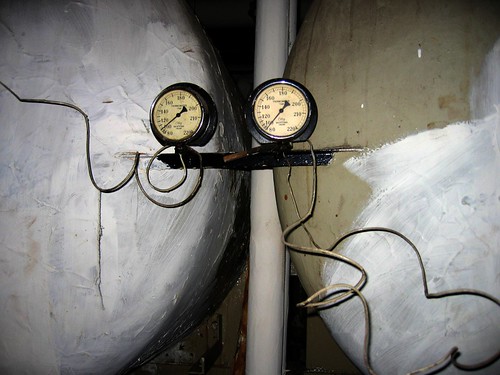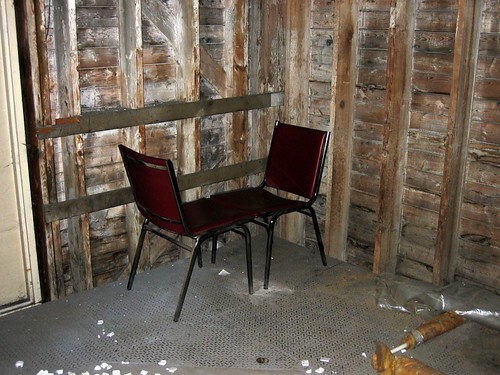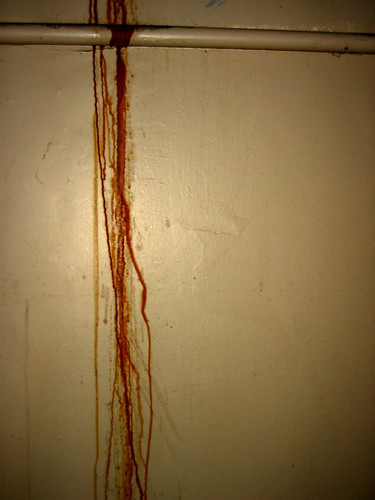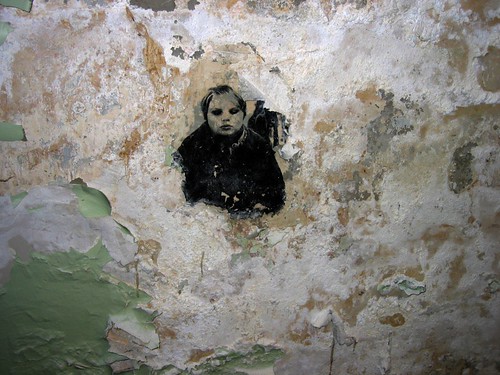
While I was playing around with geotagging the other day, I found some photos I had taken while exploring 1 Spadina Crescent. The building sits in the middle of Spadina Avenue, just north of College and has since 1875. It got me thinking about the building where I worked for one year, often late into the night. I still remember the haunting atmosphere of the place. It’s a building that smells of lives already lived and you can feel it breathing with history. It is also a beautiful building.
Marc Gotlieb argues that “by virtue of its dedicated circle and soaring tower, it is hard to imagine a more impressive gateway to the university.” Toronto philanthropist Bernard Herman obviously agrees with Marc. In 2005, Harman donated “$1 million to help restore the University of Toronto’s heritage property at 1 Spadina Crescent,” reports the university.
“People give money to the poor, the sick and the aged to satisfy their conscience,� says Herman, a U of T alumnus and avid art collector. “A person gives to the Faculty of Arts and Science to satisfy his or her intellect.�
Giving money to a building like 1 Spadina Crescent also satisfies his or her city’s past. Built by Knox College before they moved to St. George, the building later became a military hospital during the First World War. In 1918 Amelia Earhart worked here as a nurses aide. Then, in 1943, Connaught Laboratories purchased the hospital, where they manufactured important vaccines and antitoxins. Since 1972, 1 Spadina has belonged to the University of Toronto, however the story continued.
The building became home to the university’s fine art department. In January of 2001, fine art senior lecturer David Buller was stabbed to death in his office in 1 Spadina. The tragic murder is unsolved to this day.
The building also houses the Eye Bank of Ontario. I still laugh about the cabbies who would sporadically arrive with small coolers — eye donations.




